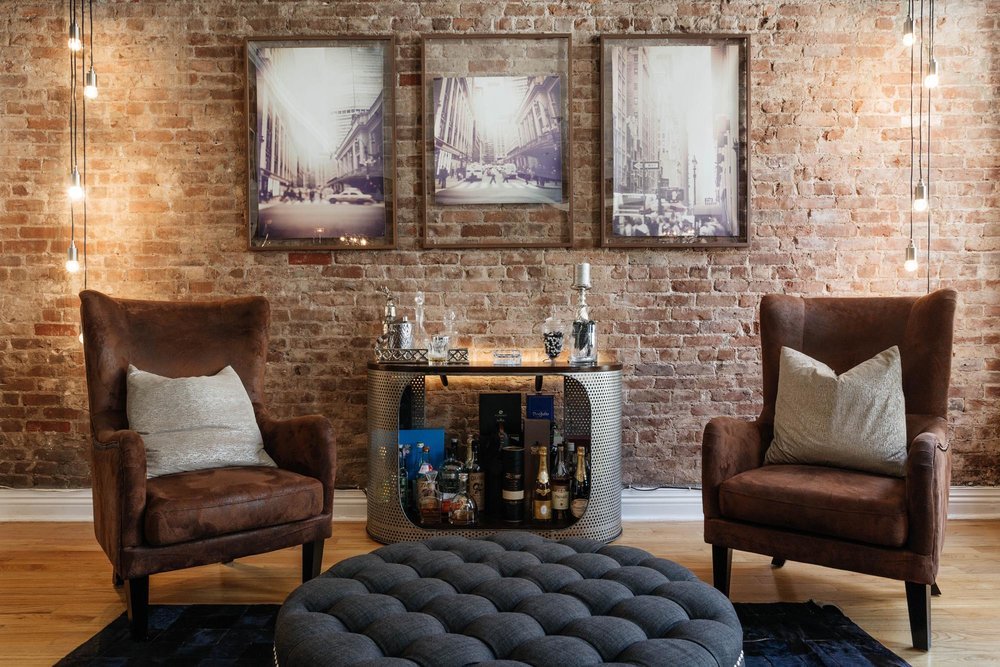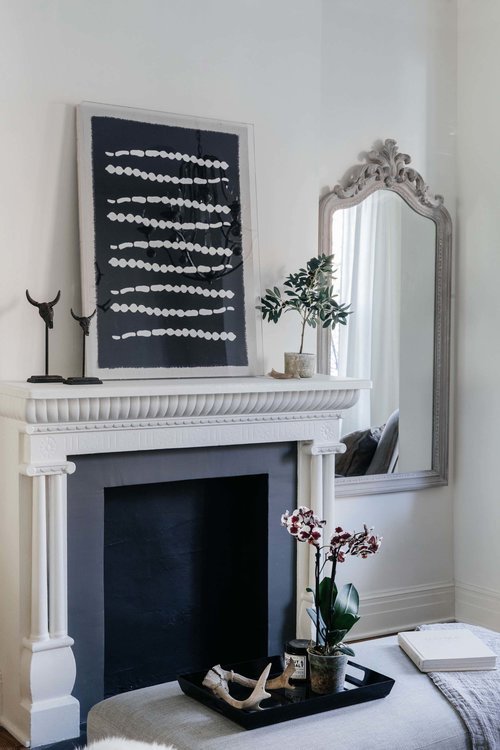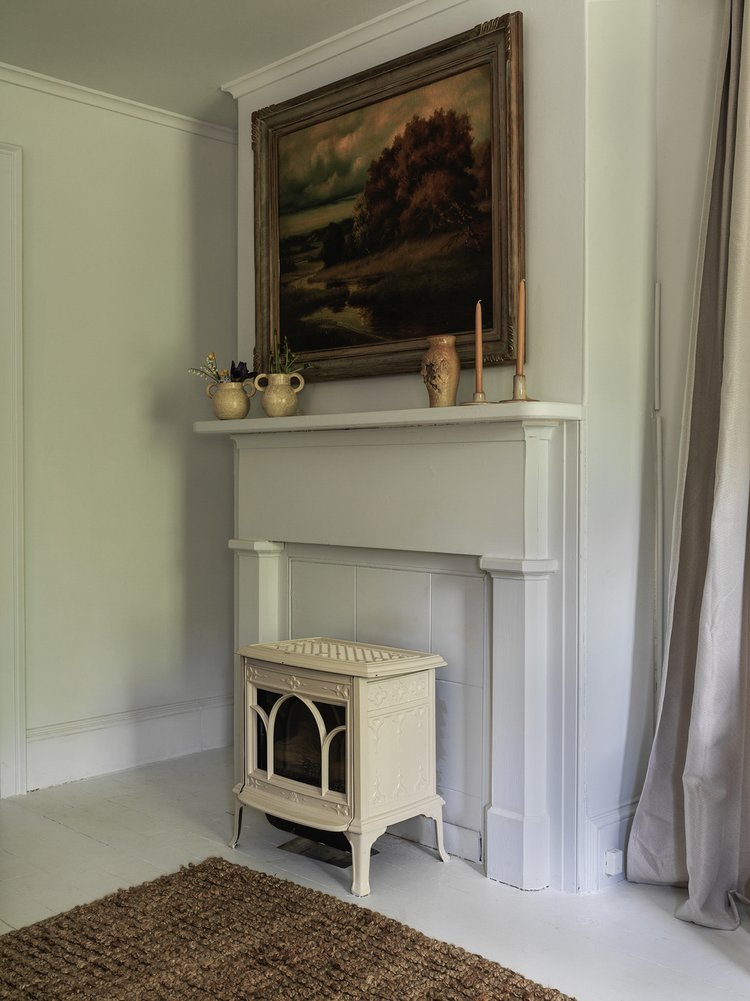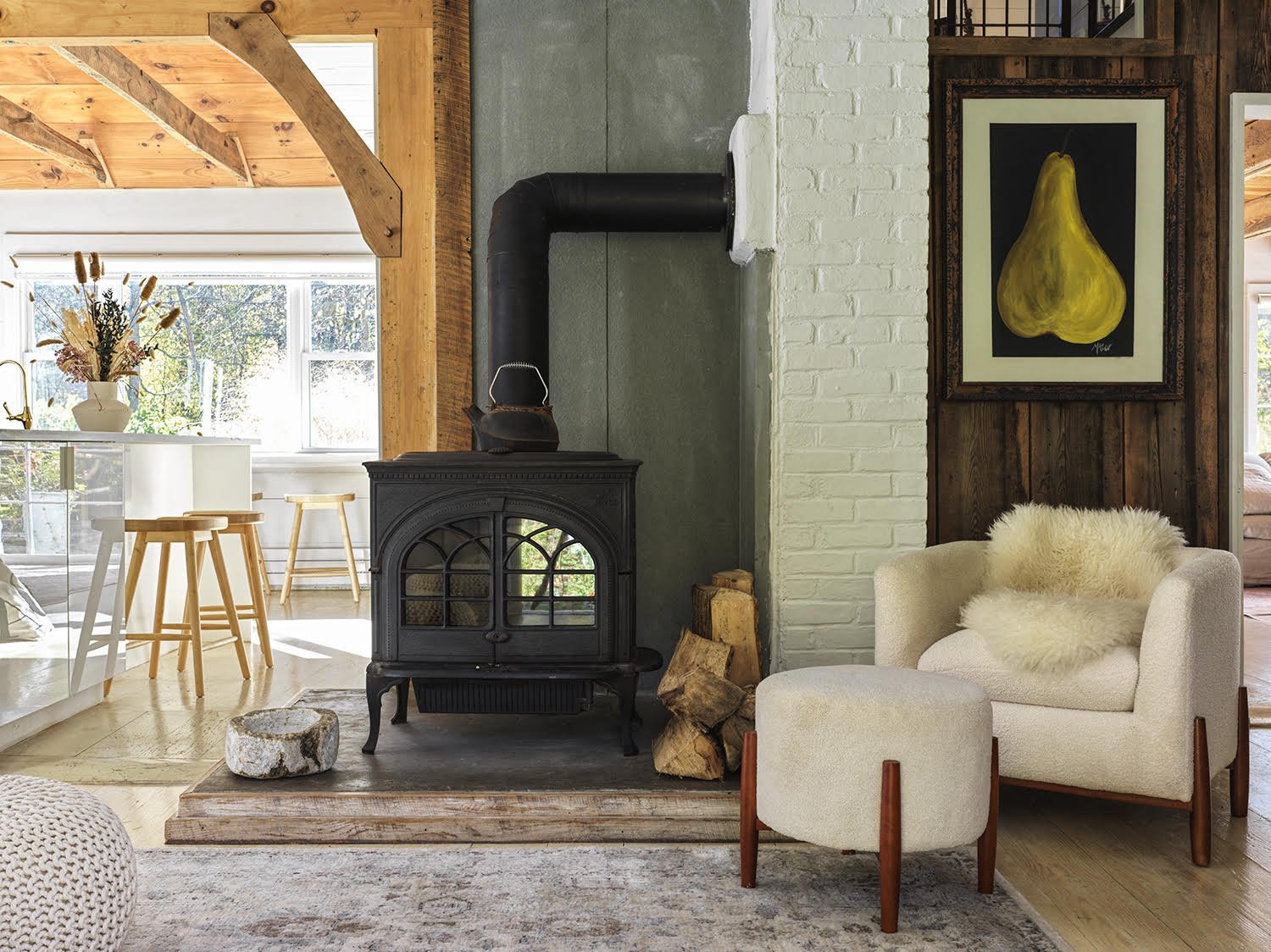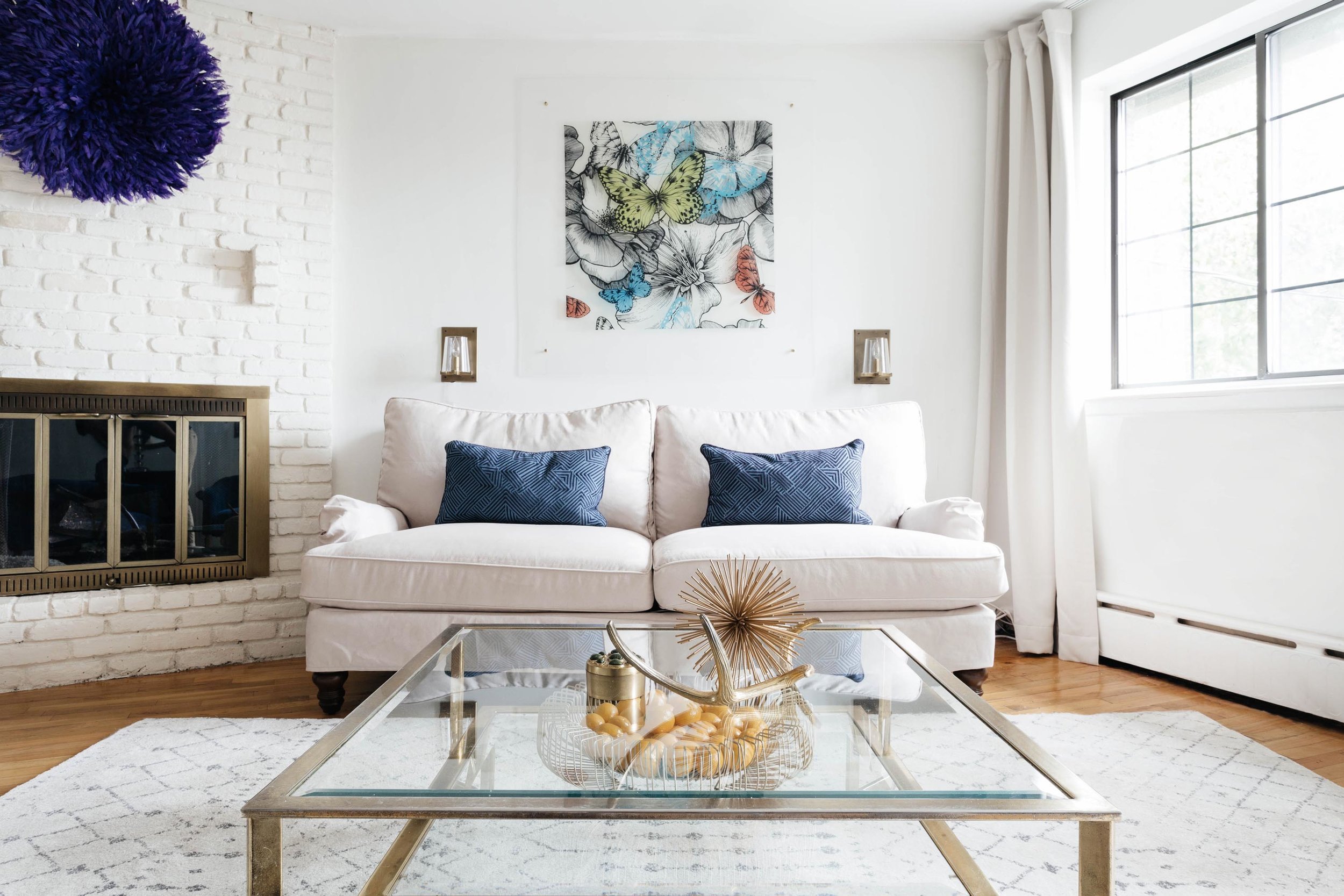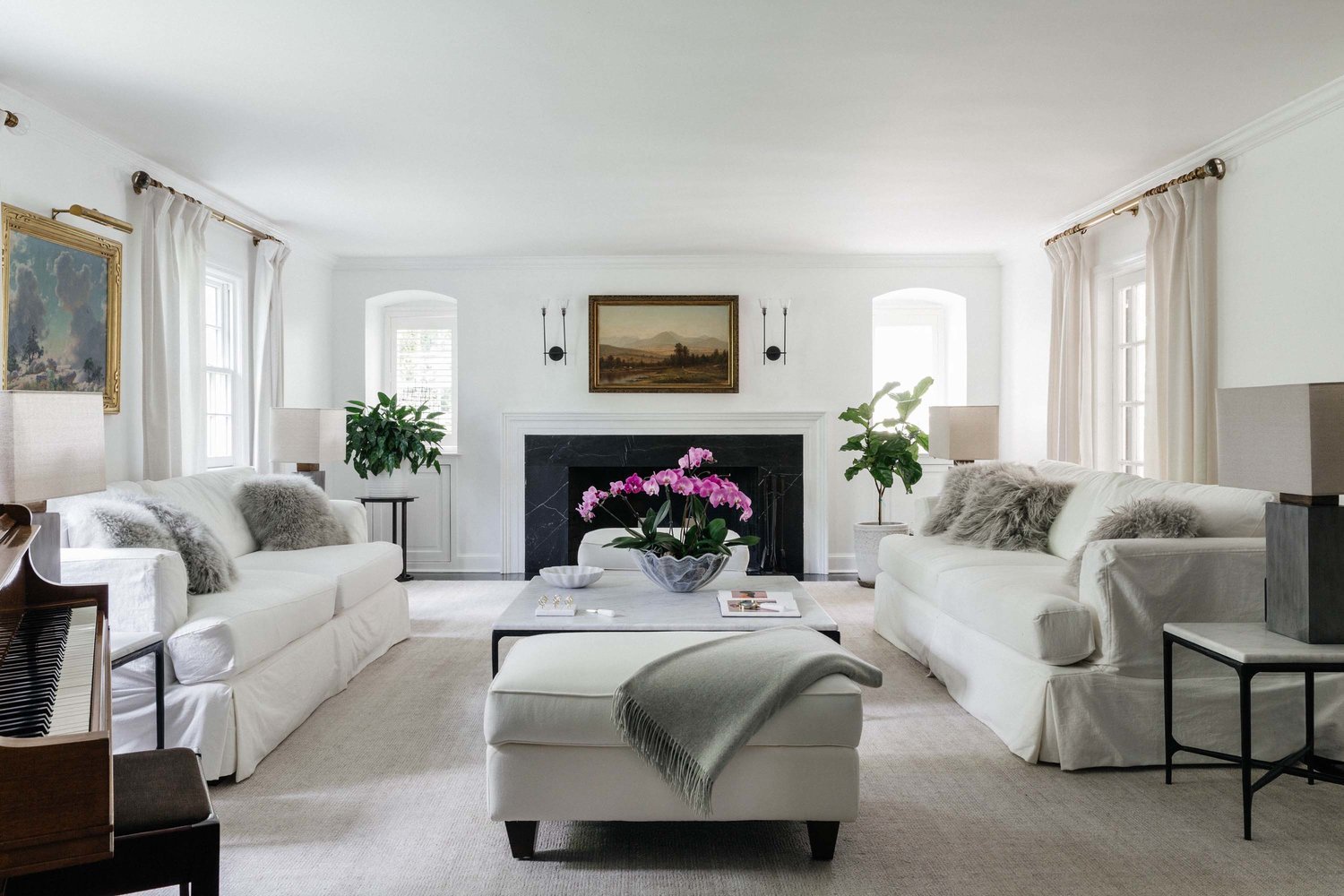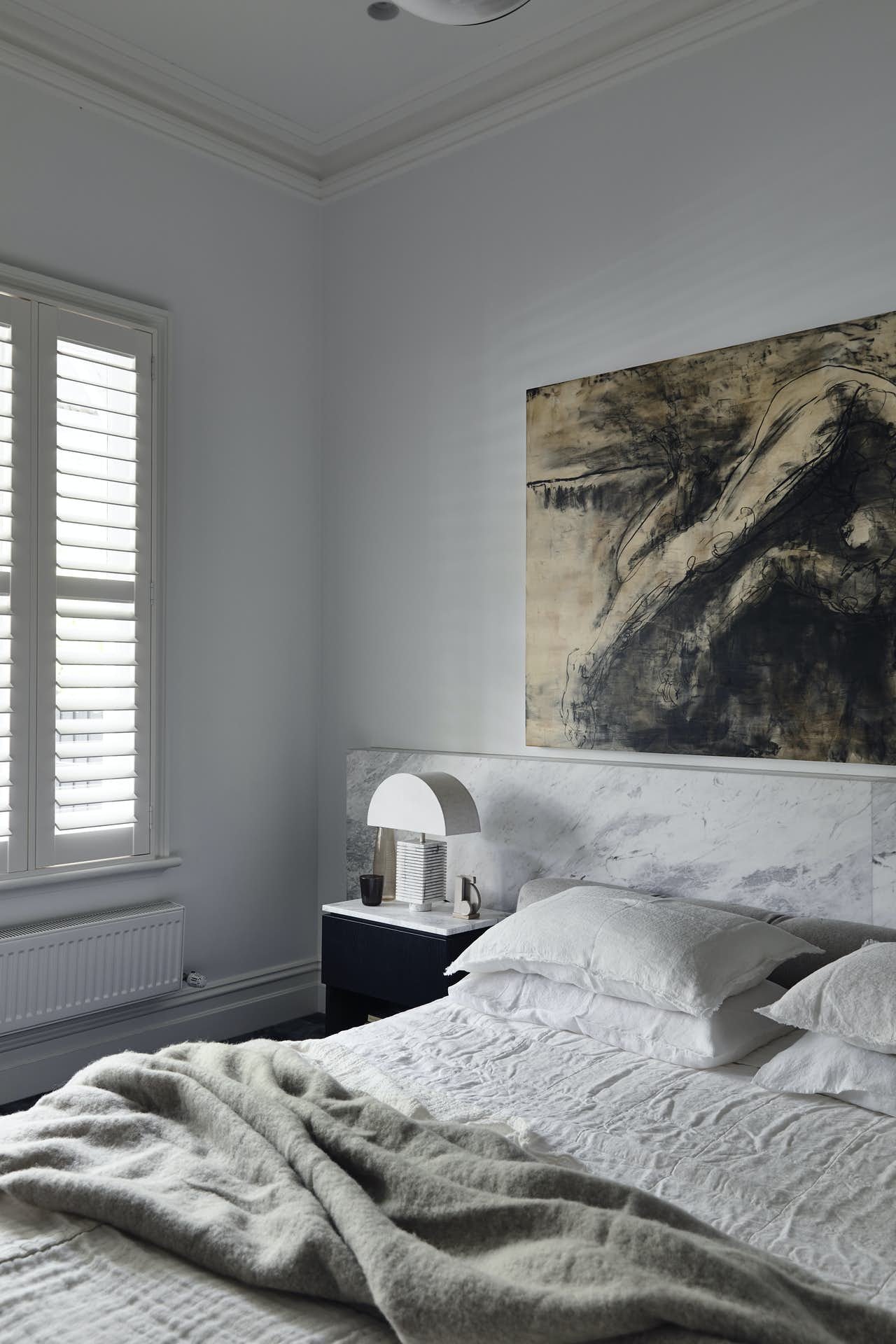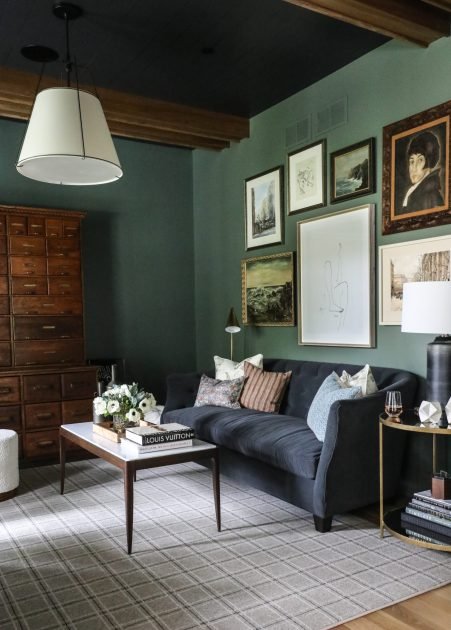How to Select Artwork and Where to Place It in Your Home
Does the idea of buying artwork seem intimidating to you? Maybe you know what you like, but you’re not sure what will work well in your home? Or where to hang pieces?
If you’ve answered yes to any of these questions, then the good news is you’re not alone. At AHG Interiors we’re breaking down how to select artwork and where to place it in your home.
Think About Artwork Style
Before you start shopping think about what style (or styles) of artwork you’re drawn towards. You can get ideas by browsing design publications and images on Houzz, Pinterest, and Instagram.
However it’s not as simple as picking a style you like, you’ll also have to think about what coordinates with the style of your home. Do you have a more traditional home or a more modern space? The artwork you choose doesn’t have to match exactly but should complement your interiors.
AHG Interiors - Park Slope Apartment
This means you can mix and match styles as long as they’re cohesive. Like modern art can work well in more traditional spaces and more traditional artwork can also work well in modern spaces. But there has to be cohesion, for example, bold street-inspired artwork wouldn’t work well in a Catskills farmhouse, but that doesn’t mean you can’t incorporate some modern pieces.
For more on this subject, check out How to Select Artwork for Your Design Style.
Statement Art vs. Accent Art
Next, you’ll want to consider if you’re looking for artwork to be the focal point of a space or for pieces that are accents to the room design. If you’re buying artwork for multiple rooms, maybe you’re looking for both types?
AHG Interiors - Tribeca Loft
Artwork can serve as the inspiration for the design of a room if you’re designing a space from scratch. It can set the tone for a room not just with the style and color scheme but also with the mood of the piece. Ask yourself, how do you want to feel in this room? Depending on your answer you may realize you need something bold and bright or softer and muted. If you have a piece of artwork that is the main focal point of a space, then the rest of the design elements should balance it.
But artwork doesn’t always need to be the main event. In many cases, you’ll want to find pieces that round out the design of a space. So you’re looking to match and coordinate with existing colors in the space.
Buy Artwork You Love
First and foremost you should invest in artwork that you love.
AHG Interiors - Park Slope Townhouse
Don’t get too worried about figuring out who’s going to be the next Andy Warhol, as even art experts can’t guarantee what’s going to skyrocket in value. Also, it usually takes decades if not generations for artwork to increase in value significantly.
Rather than focusing on the monetary value of a piece think about the emotional investment you’re making. You’re investing a lifetime of enjoyment in a piece and something special you can pass down to your family.
AHG Interiors - Rhinebeck Farmhouse
Buy pieces that have meaning. Learning more about the artist can deepen your connection and understanding of a piece. Otherwise associating an artwork with a special occasion or memory is another way it can have significance to you. View artwork as an extension of your style and personality – a way to share your unique story through design.
If you’re worried about getting tired of a piece after a while, it's good to note that if you really love it, it will be timeless.
At the same time don’t overthink it or put too much pressure on it. You don’t need to fall madly in love with every single piece of art in your home, some can just aesthetically coordinate with the space, like a great side table or accent chair.
Pay Attention to Scale and Placement of Artwork
When you’re looking for artwork to hang in a specific space, think about how the piece should fit within the design of the room. The factors you should consider are the size of the wall and the space available. Also, the color scheme, style, and lighting in the current space.
AHG Interiors - Catskills Farmhouse
One big mistake homeowners make when hanging artwork in their homes is picking art that is not the right size for the space.
To avoid this, here are tips you should keep in mind:
Measure carefully, focusing on the empty wall space
Artwork should cover ⅔ to ¾ of the available wall space
Artwork should span ⅔ to ¾ of the width of the furniture it’s placed over
AHG Interiors - Queens Apartment
As a general rule of thumb, it’s better to go bigger than smaller. A piece that’s too small for a wall will look off. Also, the same guidelines apply for groupings of artwork, like a gallery wall. Consider the scale of the grouping as one piece.
If you’re having trouble with size, Franklin Arts has a handy wall art calculator to help guide the size of your artwork selections.
AHG Interiors - Larchmont Tudor
When thinking about art placement, don’t forget about protecting your artwork. This means framing it with UV protective and antireflective glass (or plexiglass). Also, be mindful of natural light, too much direct sunlight can cause artwork to fade. Significant temperature changes can also cause damage and warping to art so keep your home at a regular temperature and be mindful of hanging artwork near vents.
When you’re ready to hang art the center of the piece should be at eye level which is about 60 inches. This can vary though based on the height of the wall and if you’re hanging artwork around furnishings. Obviously, if you’re leaning artwork on shelves and filling a space with high ceilings that the 60-inch rule doesn’t always apply. Just keep the space as a whole in mind.
Dwell
Consider What Artwork Suits Different Rooms in Your Home
Once you know what styles and sizes of art you’re looking for and where you’ll need to fill spaces in your home. You’ll also want to think about what types of work will work in each space. To start, think about the function of each room and how you want the space to feel and that’ll help inform the types of works for each space.
If you like statement artwork, think about placing them in your entryway, living room, and/or dining area. This is where you’ll want to include pieces that act as the focal point of the space and a conversation starter. The size, color, medium, and subject are all factors that can make a dramatic piece. Whether it’s bright or deep colors, something sculptural and intricate, large scale, or a striking theme.
Studio Mcgee
When buying artwork for the kitchen, think about what will coordinate with the materials and color pallet in that space. You might already have a focal point like a large kitchen island with pendant lights, so you don’t want to choose artwork that’ll compete. Instead, go for accent pieces that’ll complement the space.
If you need artwork for bedrooms in your home, think about cool tones and calming themes. Since bedrooms are where you, your family, and guests sleep you’ll want to choose artwork that reflects that mood. This means staying away from anything that is too bright or energizing.
You can go one of two ways when hanging art in the bathroom. Bathrooms are great spots for calming and soothing pieces, especially if you want home spa vibes. Or you can also hang fun eclectic pieces, or works that you might have a hard time finding a spot for – anything that your guests may enjoy discovering while they visit.
Park and Oak


